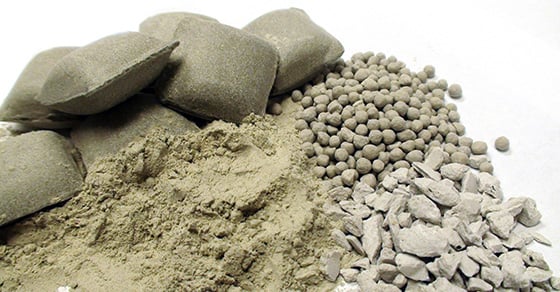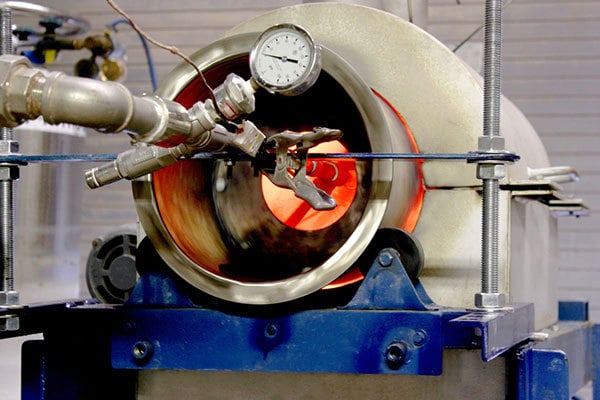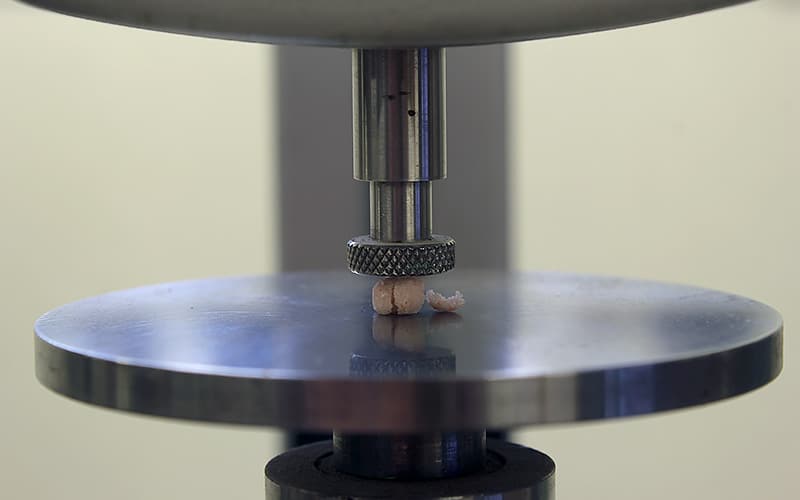Clay is arguably one of the most important industrial minerals on Earth. This diverse, naturally occurring material created through the breakdown of rock is used in an endless number of applications throughout a host of industries. In 2016, the US Geological Survey estimated that 25.7 million tons of clay, valued at $1.43 billion, were produced (sold or used).
Found in many of the products that surround us throughout our daily lives, few materials can boast such varied use as clay. Clay comes in many forms and with variations of accompanying minerals, but with such diversity in both origin and end use, comes unpredictability. This makes testing a necessity when it comes to product and process development around clay products or when using clay as an additive in other products.
Applications of Clay
Clay is used in so many products, one would be hard-pressed to list them all. Some of the most common applications for clay are listed below:
- Cat Litter
- Roofing Granules
- Proppants (for use in hydraulic fracturing)
- Refractory
- Drilling Mud
- Cosmetics & Personal Care Products
- Absorbants
- Construction Materials
- Paper Coating
- Ceramics
- And more…
In addition to direct uses, clay is also widely used in the production of other products to assist in processing, or to give the end product specific qualities. For example, it is frequently used as a binder in the agglomeration process.
Properties of Clay
In general, clay offers a number of qualities that make it such a notably flexible medium for widespread and variable use, though not all clays exhibit all properties:
- Plastic when wet
- Fine-grained
- Swells when wet
- Hardens upon drying
- Cation exchange capabilities
- Catalytic abilities
- Low permeability
Types of Clay
Various types of clay exist, each bearing its own unique combination of characteristics and subsequently, suited to different applications. According to the EPA, the US Bureau of Mines recognizes six categories of clay: kaolin, ball clay, bentonite, fuller’s earth, and common clay and shale. Clay minerals may also be found in the presence of other minerals, which can further diversify their characteristics.
Clay is so variable, in fact, that the Clay Minerals Society developed an initiative called the ‘Source Clays Program,’ which aims to provide representative samples and analyses of clay minerals. The program was in response to significant differences in mineral samples even within the same deposit; data gathered from different researchers at the same deposit was nearly incomparable.
Types of Clay Testing
With such variation, testing is a critical step in both process and product development when working with clay, be it directly or indirectly.
Various methods are utilized to process clay minerals into an end product. In this article, we’ll focus on two of the most common: agglomeration and thermal processing. Please note: much of the information contained here is specific to the FEECO testing facility – The Innovation Center.
Agglomeration
Clay may be agglomerated for use in a wide range of applications. Typical applications that utilize an agglomerated product include proppants, cat litter, absorbents, and refractory, among others.
It is not always clear which method of agglomeration will best serve the needs of a particular clay. Additionally, the variability clay exhibits makes testing critical to figuring out process variables in order to produce the desired results from the particular source of clay. For this reason, testing of agglomeration approaches is a very common initial step in the development of a clay product or process.
The following methods of agglomeration are frequently tested in the FEECO Innovation Center:
Pelletizing
Pelletizing is a method of non-pressure (tumble growth) agglomeration and can be carried out using various pieces of equipment, as well as combinations of the equipment. Pelletizing is often conducted using a drum granulator or a pin mixer and disc pelletizer combination.
De-Dusting/Conditioning
It is often desirable to agglomerate powdered clay into a more manageable product to reduce or eliminate issues associated with dust. This is typically carried out in a pin mixer or pugmill mixer (paddle mixer) and is referred to as de-dusting or conditioning. In this setting, the focus is on creating a more easily managed material for handling or transportation, with less emphasis on reaching precise particle characteristics.
Coating
While coating is not an agglomeration process in itself, it is often categorized as such, as the two processes are closely related. Coating is a treatment to the surface of particles whereby a coating material is applied to improve product performance or maintain product integrity.
Coating can be tested with clay products themselves, or with clay as the coating onto another material. Coating is typically tested utilizing a coating drum, in which agglomerates are tumbled and sprayed with the coating mixture in order to evenly coat the material.

Image: The image above shows how a raw clay material (powder) can be processed into a variety of agglomerates: briquettes, pellets, and granules (from left to right).
Thermal
Drying
Drying is a necessary step in creating many clay agglomerates, particularly when moisture is added in the form of a binder.
The drying step reduces the moisture content of the agglomerates, hardening them into their final form, so they can move on to packaging or storage, or further processing, such as when a rotary kiln is employed.
The Innovation Center setup allows a test dryer to be integrated as a downstream step from agglomeration. A flight simulator for testing flight/lifter design and pattern variations is also available.
High-Temperature Thermal Processing
It is also common to process clay products in a high temperature environment in order to reach desired end product characteristics. This may include objectives such as burning off organic impurities, removing molecular water (conversion of hydrous to anhydrous clay), altering the crystalline structures of the clay, or modifying optical properties of the clay such as whiteness, brightness and opacity.
The FEECO Innovation Center offers a variety of batch and pilot-scale test kilns for clay testing. These kilns can be configured to simulate the process conditions of a commercial size unit to work out process variables for scale-up.

FEECO Indirect Batch Kiln in the Innovation Center
Continuous Loop Testing
Testing for agglomeration and thermal processing is typically carried out first at batch scale on single pieces of equipment to analyze feasibility and gather initial data points. Batch-size samples of various formulations and equipment configurations can be produced for use in field trials. Once batch scale testing is complete, testing moves on to continuous, pilot-scale testing.
Many processes utilize both agglomeration and thermal processing to produce the desired clay product. As such, it is often advisable to test the different components of a process as part of a continuous loop in order to predict problem areas and reduce surprises after scale-up.
Particle Characteristics
A premium clay product that performs as intended is often the result of significant test work to determine just the right balance of process variables to create the desired end product characteristics.
Depending on the application of the end product, a number of material characteristics may be analyzed and fine-tuned during the testing stage. This might include:
- Bulk Density
- Crush Strength
- Particle Size Distribution
- Moisture Content
- Green/Wet Strength
- Attrition
- Compression
- And More…

An agglomerate sample is tested to determine its crush strength
A 3D Dynamic Image Analysis tool also provides real-time particle analysis during testing to measure density, thickness, surface roughness, size, shape, and more.
Formulation
Formulation testing is the process of working out the exact ratio of feedstock materials, as well as the binder (where applicable). Sometimes, a specific formulation is desired, while other times, the exact formulation may not be as important as the end product’s performance. In situations where a specific formulation is desired, process engineers work to determine if the formulation is feasible from a process standpoint. This might include testing different methods of agglomeration, or varying process parameters in a rotary kiln.
When the formulation is less important, process experts focus on producing the desired end product characteristics, with the ratios of material within the formulation likely changing to meet the end goals.
Process Parameters
A number of process-related variables will influence the characteristics of the end product and are often fine-tuned in order to reach the desired characteristics as well. Process parameters that are particularly important for clay products may include:
Method of Agglomeration
While some applications will dictate the method of agglomeration used to create a particular clay product, it is often not clear which approach may be best suited to a particular clay project. In cases such as these, multiple methods of agglomeration may be tested to determine which approach will yield the best results.
Moisture Content
As a material that works so closely with moisture, the moisture content of a clay product is often one of the primary target characteristics.
The moisture content of a clay product is a delicate balance and requires expertise to produce the desired results. A moisture content that is too high may cause clumping, while a moisture content that is too low may result in a less dense product, creating a product with poor handling characteristics and higher attrition.
Similarly, the product must be designed with environmental factors in mind; will the product be stored in a humid environment, where it is likely to pick up moisture and result in clumping?
Process Variables
A number of process variables will influence how successful the process is. Among them:
Thermal Processing Variables
- Feed Rates
- Retention Time
- Temperature
- Rotational Speed of Drum
- Co-current or Counter Current Air Flow
- Direct or Indirect Processing Environment
- Particle Size Distribution
- Moisture Content
Agglomeration Processing Variables
- Feed Rates
- Retention Time
- Binder Type and Ratio
- Type of Agglomerator (pan pelletizer, rotary granulator, pin mixer or pugmill mixer)
- Mixer Shaft Speed (where applicable)
- Binder Spray System (where applicable)
- Pan Speed (where applicable)
As a Rockwell Automation partner, the Innovation Center is equipped with the latest in automation, data tracking and trending. While this is a benefit to anyone testing in the Innovation Center, it is perhaps especially valuable for those working with clay.
The PLC/MCC system from Rockwell Automation allows a number of data points to be tracked, trended, and reported on, with some capable of being adjusted in real-time from a single interface. This provides process transparency and troubleshooting that is unmatched in the process development stages.
Conclusion
As one of the most widely used industrial minerals, clay is found in many of the products around us every day. But with varying types and characteristics, clay’s unpredictability can make it a challenge to process into a product that performs as desired.
Testing is critical to the development of a clay product, no matter what process is utilized to transform it into the end product, or what that end product might be.
The FEECO Innovation Center is a unique testing facility that can accommodate all of your clay testing needs, from agglomeration to advanced thermal processing, with continuous, pilot scale processing integrating multiple approaches available.
For more information on testing clay in the Innovation Center, contact us today!

